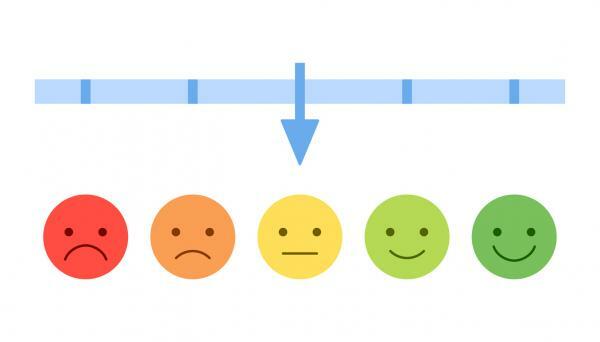
All emotions are necessary for the human being and is that each emotion has a function that allows us to adapt to the environment and survive. Emotions can be pleasant to us (such as joy) or unpleasant (such as sadness). Despite the fact that, as we have started by indicating, they are all necessary, we try to get rid of and / or avoid the unpleasant ones.
In this Psychology-Online article, we tell you how to manage sadness through fifteen tips that you can put into practice. You must bear in mind that when sadness is intense, it generates great discomfort and / or interferes with your daily activities, you should consult with a professional who evaluates your case and offers you the guidelines adapted to your case and / or prescribes an appropriate treatment for your case. We are going to see 15 techniques and activities to work sadness in adults.
Index
- Know your emotions
- Identify your sadness
- Accept sadness
- Search and try to understand the cause of your sadness
- Look for the message of your emotion
- Rate the message
- Pay attention to your thoughts
- Set moments to think
- Lean on your social network
- Do enjoyable activities
- Do physical exercise
- Watch your diet
- Maintain good sleep habits
- Establish routines
- Seek professional help
Know your emotions.
As we have already indicated, all emotions are necessary for the human being. You must understand that, although it is an unpleasant emotion, sadness is as necessary for us as joy.
Sadness accompanies us throughout life, although we experience it sometimes in a milder way and others more intensely. More than getting rid of it or thinking about how to overcome and control sadness, we must learn to manage it.
Identify your sadness.
Do you know how sadness manifests itself? Emotions have a physiological correlate, therefore, when we are sad we can experience sensations such as feeling a knot in the stomach, feeling tightness in the chest, etc. Find where and how you are feeling your emotion, locate what changes you have noticed and may be related to your sadness. How to remove the lump in the throat due to sadness? We will see it next.
Accept sadness.
Reiterating what we have already discussed in other sections, sadness will accompany us throughout our lives. We must accept that feeling sad is as normal as feeling happy.
We live in a society in which pleasant emotions are highly rewarded and unpleasant ones are punished and / or censored, because being sad is part of the human being, it is inherent to him.
Find and try to understand the cause of your sadness.
In many cases we can find the cause of our sadness: the boss has scolded us, we have fought with a friend, your roommate moves, etc. Knowing the cause will help you accept your emotion and it will give it a meaning.
You must bear in mind that sometimes we can feel sad as a result of a biological imbalance. In these cases the cause may not be so obvious.
Look for the message of your emotion.
If you wonder how to overcome sadness, you should know that the first step to manage it is to listen to it. All emotions provide us with a message and they move us to action. Find out what message the sadness may be giving you right now.
For example, if we feel sad for having quarreled with a friend, our emotion may be telling us that we should seek a reconciliation. Another example may be one in which sadness tells us that we should not go to a party to which we have been invited.
Rate the message.
Once we have identified what message our sadness is giving us, we must assess whether the message is appropriate and whether we pay attention to it or not. In the examples in the previous section we can pay attention to him and go in search of our friend to reconcile, but we can ignore him and go to the party, for example.
Pay attention to your thoughts.
Your sadness may be being triggered, aggravated, or mediated by the thoughts you are experiencing.
In the same way, emotions can interfere with our thoughts and cause bias. For example, we may think that we have had a really bad day and only negative things have happened to us because at the last minute of the day we have discussed with a colleague, but it has really been a good day and the only negative event has been this latest.
Set times to think.
In relation to the previous point, it is possible that your sadness is being caused by a concern that does not you manage to make it disappear from your head and yet you know that it is neither beneficial for you nor will it help you in nothing.
Establish "junk times", that is, times when you are going to deal with those thoughts and / or concerns. It is not about avoiding the thought, but about reorganizing it in your schedule so that it does not interfere with your daily activity and dedicating a limited time.
Lean on your social network.
One of the functions of sadness, at the social level, is that of requesting or demanding help from others. Biologically we are prepared to survive individually and prepared to perpetuate the survival of the species.
In addition to carrying out pleasant activities with your loved ones, you can also share your worries, your problems or your sadness. You may even share some of the concerns, problems or emotions.
Do enjoyable activities.
It is important that you identify those tasks that give you satisfaction so that you experience more pleasant emotions and get positive reinforcement. All of this will help you cushion the impact of the most unpleasant emotions.
Get physical exercise.
There are studies that link physical exercise with a improvement in mood, even in a single session of physical exercise, as is the study by Bonet, J.; Parrado, E. and Capdevila, L. (2017)[1]. Carrying out physical exercise increases endorphin release, which affects our mood.
In addition, sadness can be accompanied by anxious symptoms. Doing sports or physical exercise is an excellent natural anxiolytic that will help us feel more relaxed.
Take care of your diet.
Some foods seem to produce a improvement in mood. In this regard, there are studies, such as those collected in the review by Ontiveros Márquez, M. (2016)[2] that associate diet and depressive problems.
Examples of foods that have been associated with a preventive effect on depression have been omega 3 acids, magnesium, zinc or even natural plants like Grass of San Juan.
Maintain good sleep habits.
Sleep habits are important and help to keep biological rhythms regulated. Have adequate csleep quality and quality contributes to physical and mental well-being.
Some tips related to sleep hygiene can be:
- Keep regular hours.
- Take care of the environment of the room where you rest: keep it clean and collected.
- Do not consume stimulant substances such as coffee or tobacco before going to sleep.
- Do not make large dinners and do not go to sleep after dinner.
- Avoid light stimuli when you go to sleep.
- Go to bed only when you go to sleep.
In this article you can see 15 guidelines for better sleep.
Establish routines.
In relation to the previous point, establishing routines will not only improve your sleep rhythm and biological rhythms, but also maintain an order in your day to day. This will also allow you to organize and manage your time in the best way possible.
Seek professional help.
If the sadness is so intense as to provoke a intense discomfort and / or begins to interfere with your activities daily, seek professional help who can assess your particular case and can design an appropriate intervention.
This article is merely informative, in Psychology-Online we do not have the power to make a diagnosis or recommend a treatment. We invite you to go to a psychologist to treat your particular case.
If you want to read more articles similar to How to manage sadness, we recommend that you enter our category of Emotions.
References
- Bonet, J.; Parrado, E. and Capdevila, L. (2017). Acute effects of physical exercise on mood and HRV. International Journal of Medicine and Sciences of Physical Activity and Sport, 17 (65) pp. 85-100.
- Ontiveros Márquez, M. (2016). Depression and diet quality: bibliographic review. Archives of Medicine, 12 (1). doi: 10.3823 / 1282
Bibliography
- Palmero, F. and Fernández-Abascal, E.G. (2002) Basic emotions II (anger, sadness and disgust). In Palmero, F., Fernández-Abascal, Chóliz, M. and Martínez-Sánchez, F. (2002) Psychology of motivation and emotion. Madrid: McGraw-Hill / Interamericana.


